Lack of creativity in Covid-19 coverage will cost SABC
I had set out to compare how eNews Channel Africa (eNCA), Newzroom Afrika and the SABC , the three leading South African 24-hour news channels, have been covering the coronavirus pandemic. There are no major differences setting them apart.
I have decided to look at how the SABC, which carries more responsibility as the public broadcaster, informs the nation about the virus. How it uses reliable content, technology and creativity in its coverage.
With six television and 20 radio stations, as well as various online platforms, the SABC is the largest news channel in the country, if not, by extension, on the continent. It has news reporters countrywide, in Africa, Asia and Europe.
Therefore, the public broadcaster should serve as a comprehensive institutional repository of Covid-19 news in SA and, to a lesser extent, abroad where it has news reporters.
There was a lot of fake news about Covid-19 at the beginning. In SA and other parts of the world, governments have criminalised the spread of fake news about the virus, as per WHO's declaration of the Public Health Emergency of International Concern on January 30 2020. Before sharing Covid-19-related data and/or information, urges the SA government, verify it.
Collaborating with Media Monitoring Africa, the Press Council and the South African National Editors' Forum (Sanef), it has put mechanisms in place to monitor and respond to Covid-19-related fake news during and beyond the pandemic.
To steer clear of fake news, the SABC seems to rely largely on data and information from the government. While this is commendable, it does not take the trouble to cover Covid-19-related fake news and thus dispel them in line with its prime role as the news outlet to inform and teach the nation about the virus.
Globally, the public broadcaster seems to rely on data from the Centre for Systems Science and Engineering (CSSE), an interactively real-time dashboard designed by Johns Hopkins University to not only track Covid-19 infections, but also model its spread.
In line with its prime role as the news outlet, it has been inviting various experts, both local and abroad, to shed some light on the pandemic and its impacts on a humankind across various spheres of life. On the reliable content, the SABC scores better.
One of the most effective non-pharmaceutical interventions (NPIs) to curb the Covid-19 spread is to keep at least a 1.5-metre social distancing.
With the country having moved from a level 5 alert to a level 3 alert of a national lockdown, which has been in force since March 26, the SABC has had to rely on various communication tools such as Zoom, Skype and WhatsApp to conduct interviews and to cover the news. So it scores better in the use of technology.
The problem lies with its lack of creativity, especially in relation to content creation. On this one the public broadcaster scores badly, the main reason being that there are no major differences that set it apart from its competitors.
Without creativity, the SABC cannot constantly grow its viewership and online following, to attract advertisers, the main source of its revenue.
As a result, it'd rely on bailouts from government or resort to retrenchments to remain in business. To set itself apart from its competitors, the SABC must invest in research and innovation, more specifically in knowledge management (KM) system.
If it has the KM system and scores so badly on the creativity criterion, then the system is ineffective.
*Tshabalala is a political analyst
South Africa IN FULL: 'Greater crisis' looms: 38 doctors plea for non-Covid health care resources 3 years ago |
